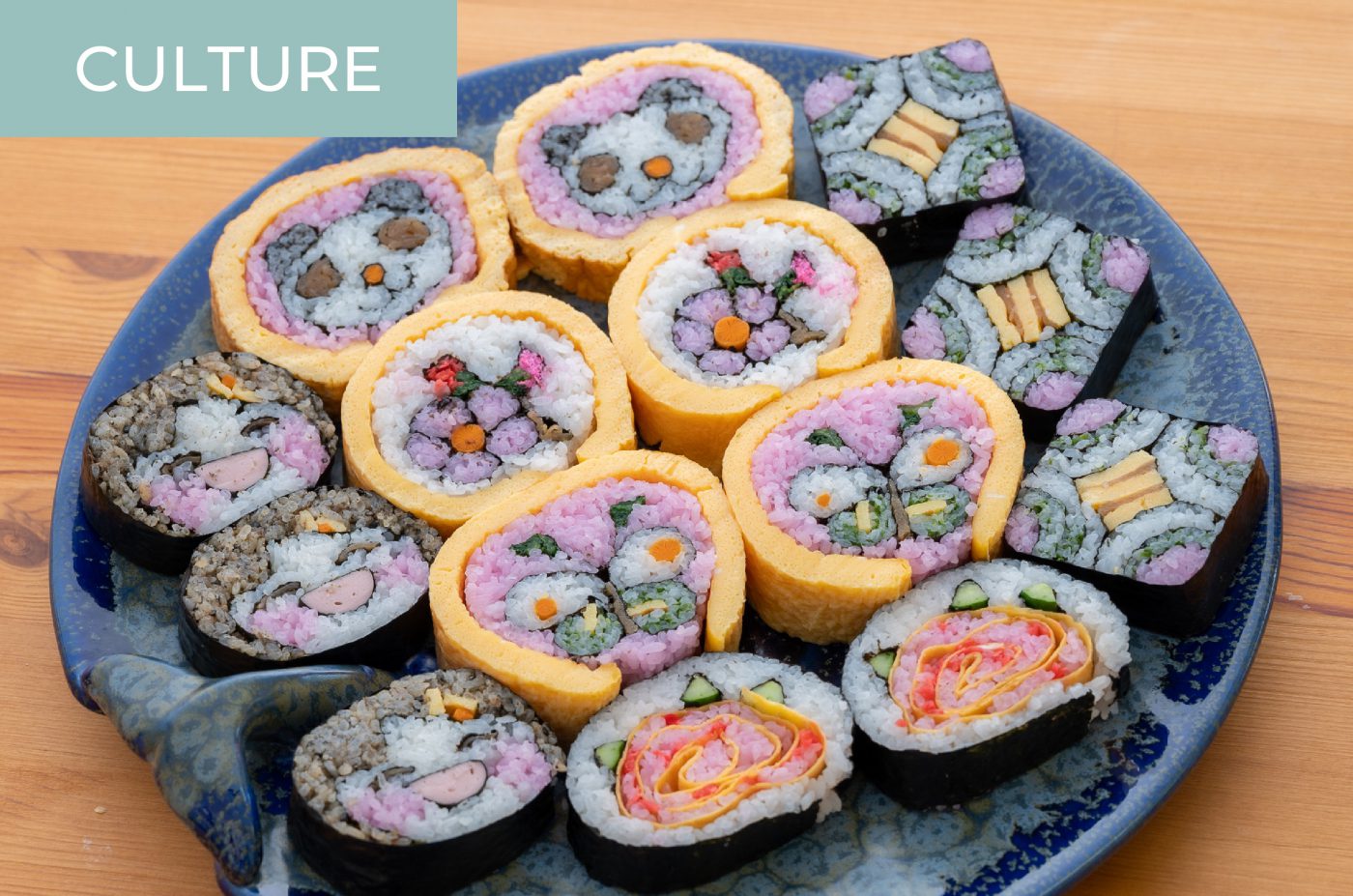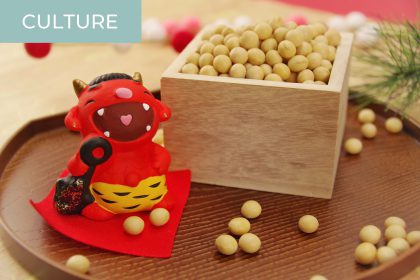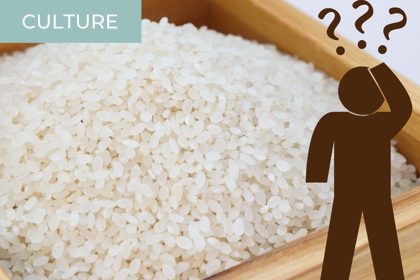If you are familiar with Japanese food, you may know the two most common types of sushi. The first is nigirizushi, literally “sushi pressed in hand,” for which a piece of raw fish is put on top of some rice molded by hand. The other type is makizushi, the famous sushi rolls, for which a piece of raw fish (or another ingredient) is rolled with rice and often nori seaweed.

Since most Japanese food restaurants outside Japan serve sushi, people often think that sushi and raw fish are the base of Japanese diet. It is true that sushi, as we know it today, was born as a sort of street food during the 19th century.
However, with time, sushi got an image of something to be eaten on special occasions, because handmade sushi made by experienced chefs in some small sushi restaurants can be very expensive. Nowadays, affordable versions can be enjoyed at more casual sushi shops, conveyor belt sushi restaurants, or from the supermarket, but that does not mean Japanese people eat sushi every day.
In Chiba Prefecture, there is a very special type of sushi called futomaki matsuri sushi, which could be translated as “big sushi roll for celebrations.”
The Meaning and Origins of Futomaki Matsuri Sushi
Futomaki sushi, or “big sushi rolls,” are not rare in Japan. Visually similar to their smaller counterparts, they include several ingredients and are often rolled in nori seaweed, keeping a nice round shape. Eating a particular type of big sushi roll called ehomaki is even part of the Japanese setsubun celebration, which takes place in early February.
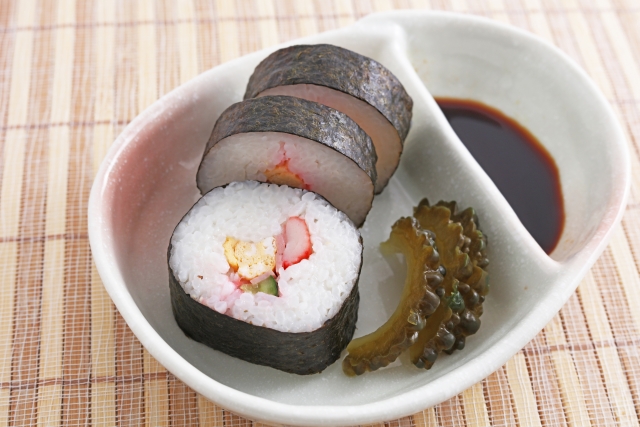
However, Chiba Prefecture inhabitants, located east of Tokyo, have developed a sort of big sushi roll close to an art form. The sushi comes in various designs, which can be cute or elegant. The patterns often reflect the current season: cherry blossoms for spring or Mount Fuji for winter, for example. They can also be used to write characters, such as the kanji for “celebration.” It seems that there are even contests for the best new futomaki matsuri sushi designs!
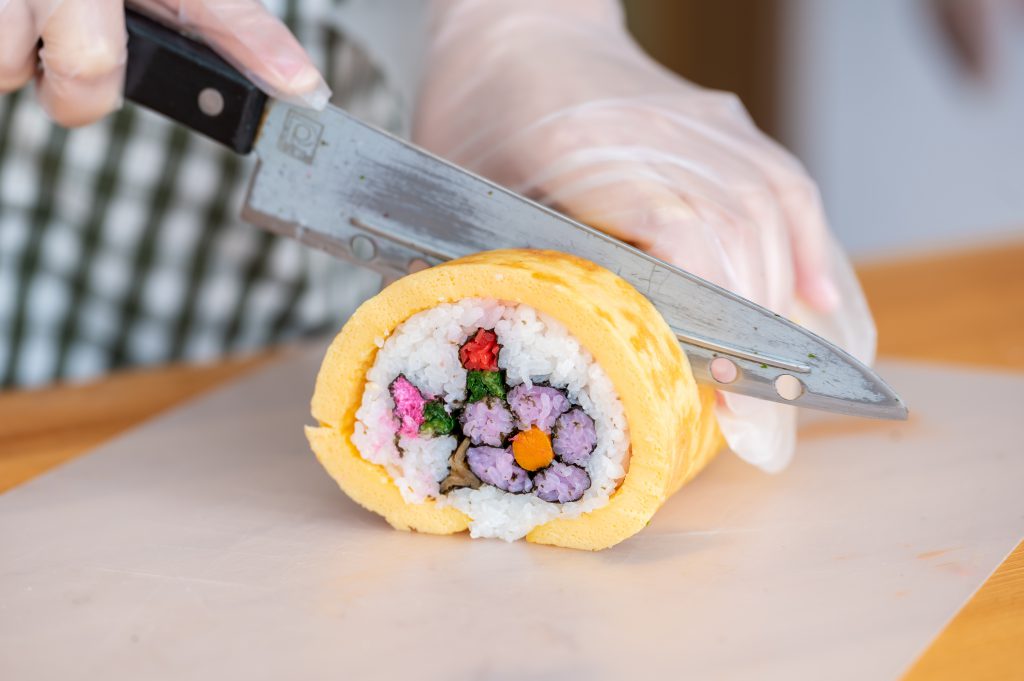
As its name indicates, the futomaki matsuri sushi is a type of sushi that Chiba people eat for special occasions: religious festivals, weddings, childbirths, and also funerals. Every significant moment of the locals’ lives is celebrated with this huge, colorful sushi. Preparing such beautiful dishes takes time and care, and serving them is seen as a way to honor guests.
The origins of the futomaki matsuri sushi are unclear. A theory says that someone once had the idea to roll boiled taro (that were served at funerals) in rice. Another story says it was inspired by the lunch snacks of fishers from a faraway province, who used to come to Chiba to fish sardines. The truth remains unknown, but surely, this sushi has been an important traditional local food since ancient times.
Making Futomaki Matsuri Sushi
With my colleagues Aree and Ayane (whom you may know from our Unfiltered Live Talks), we went all the way to Chiba Prefecture just to have fun trying our hands at this local tradition.
Looking for something authentic, we went to Hanamiyui, a small community center in the countryside of the Kamogawa area, in the southern part of Chiba. On the walls, there were many pictures and thank you messages from Japanese primary schoolers. The small workshop welcomes school trips. Kids visit the place to learn how to make futomaki sushi and other traditional local food.
We were welcomed by Ms. Hirano, a very warm and energetic woman I could not put an age to. She was very experienced in making the big sushi rolls, and also in teaching it. None of us had ever made such giant sushi before. Still, thanks to Ms. Hirano’s straightforward explanations and care, we were able to make good-looking ones!
Basic Japanese was enough to understand what was required to do since it was very visual. “We have foreign guests sometimes, but they often come with interpreters,” our teacher told us. I was very grateful that she came to our help each time we were about to make mistakes.
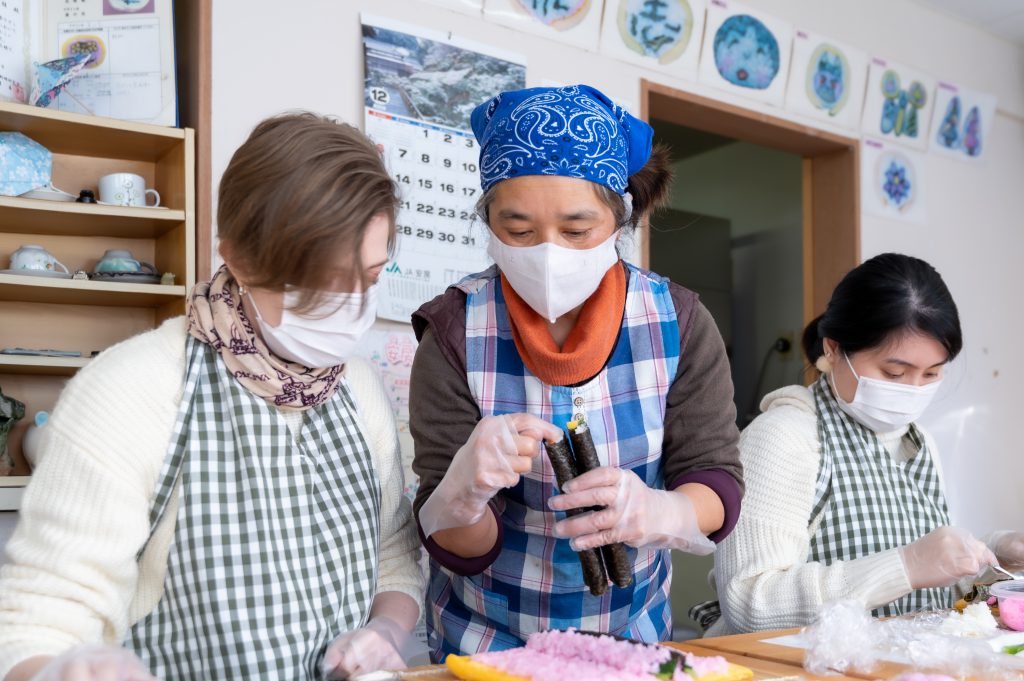
At the start of the cooking experience, we realized that the ingredients included in the sushi roll depended entirely on the design we wanted to make. The main components would be vinegared rice, seaweed, and eggs. Other ingredients included carrot, spinach, burdock, or ginger. Since Aree is the most skillful and detail-oriented of us, we encouraged her to choose the plum flower sushi roll, which looked the most difficult to make. Ayane chose a beautiful rose pattern, and I gave the butterfly one a try.
We learned that a futomaki matsuri sushi is the art of combining several smaller rolls in a way that creates beautiful patterns. The most time-consuming part of the sushi-making is creating each smaller roll separately. Each must be made with equal care, as it will influence the final result. One of the tricky parts was making sure the rice was spread equally on the sushi’s whole surface.

After making all the parts, it is now time to combine them and roll them into one big sushi. I was very surprised to realize that I had to stack the parts upside down to make my butterfly.
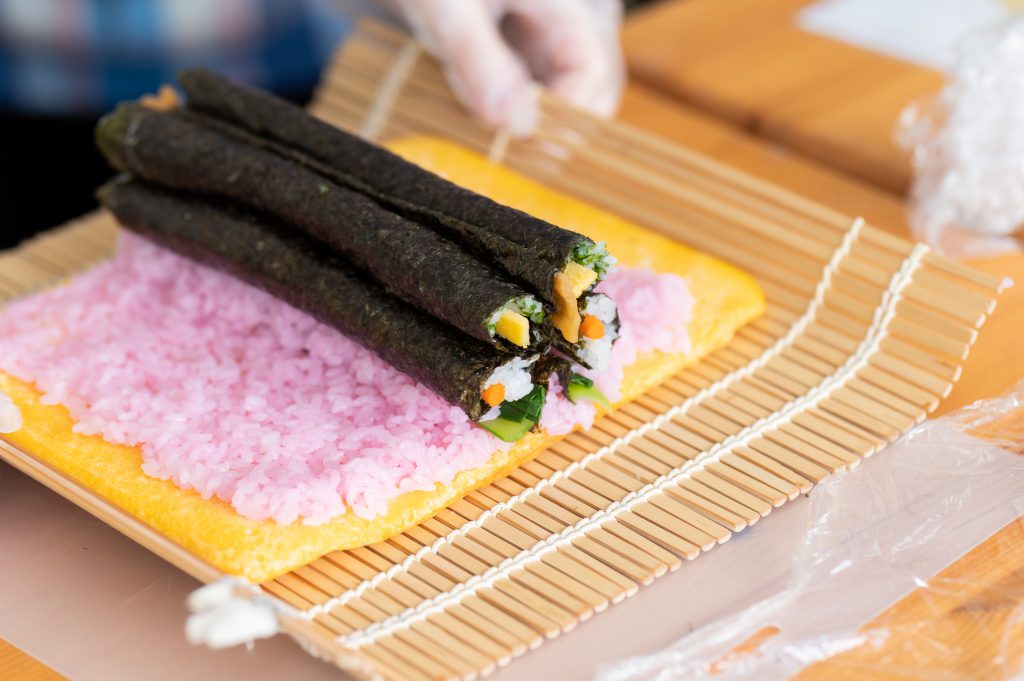
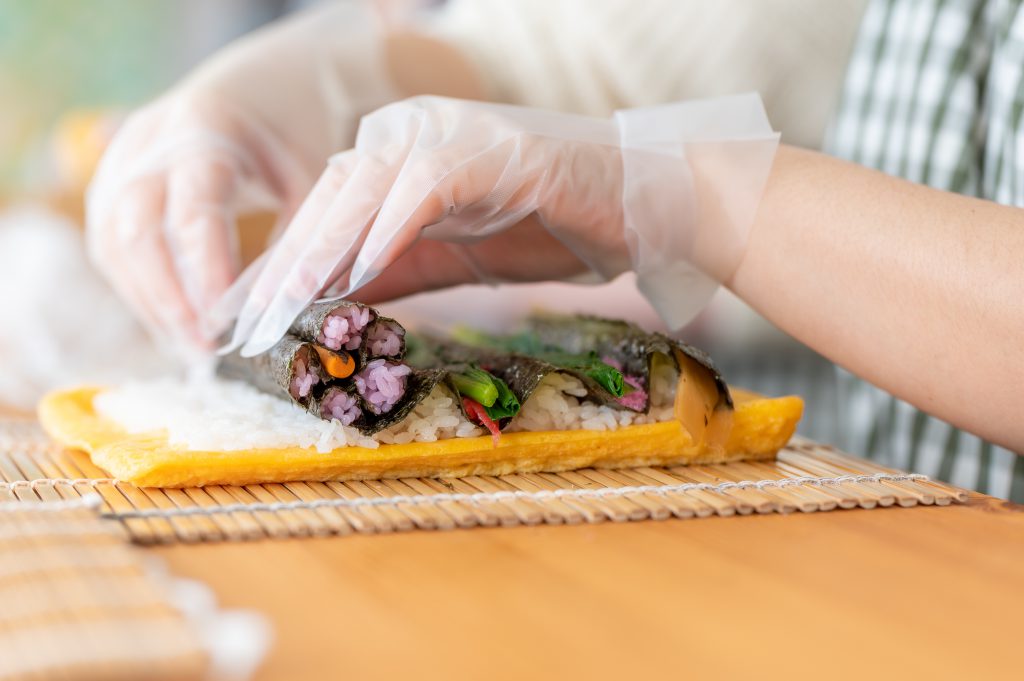
Then comes the final part: rolling the sushi and adding some extra rice on top to make sure it closes completely. The difficulty here is holding it well as it is quite heavy! Then, the roll is cut into pieces. We had to make sure not to be too fast using the knife and use it as a saw, or our precious sushi would be crushed!
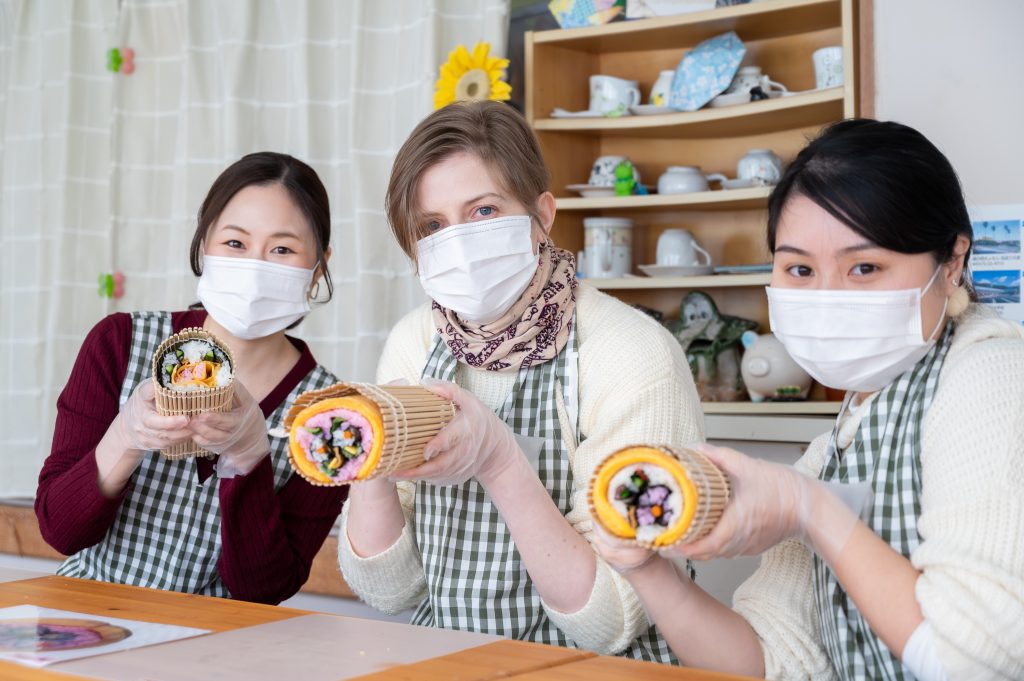

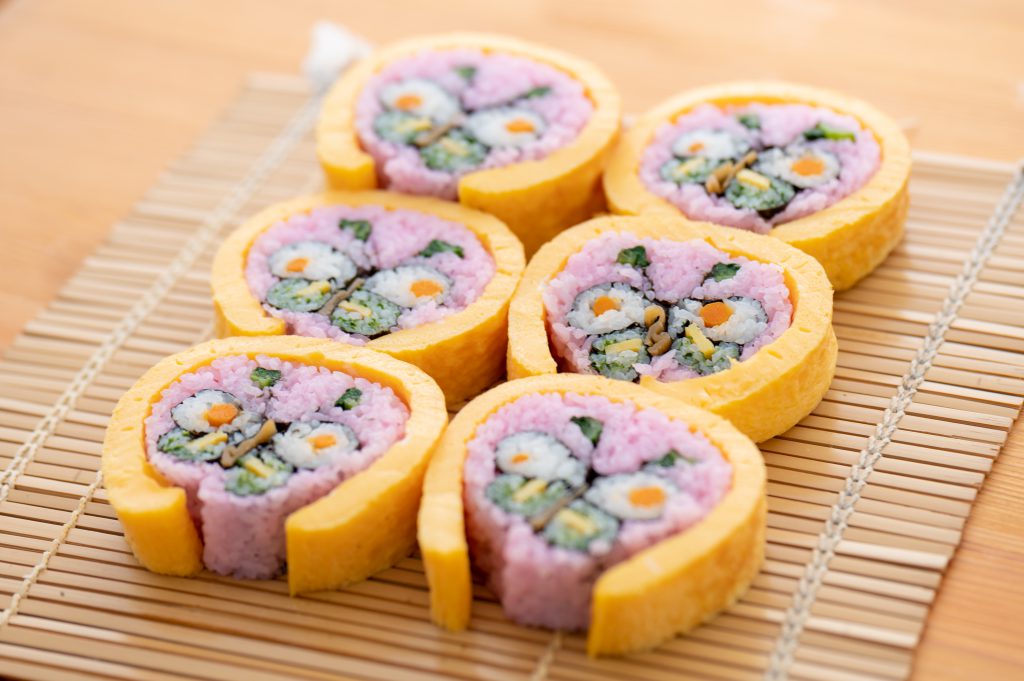
After so much effort, we were delighted to eat the result of our making. The sushi rolls were not only very cute, but they were also tasty.
Even though a few restaurants in Chiba serve this folk dish, we were pleased to make them ourselves with an experienced local. Ayane said she enjoyed the feeling of being in the countryside, while Aree said it was memorable and she had a lot of fun. As for me, the time and precision required to make these big colorful sushi made me understand why they are a symbol of hospitality in Chiba.
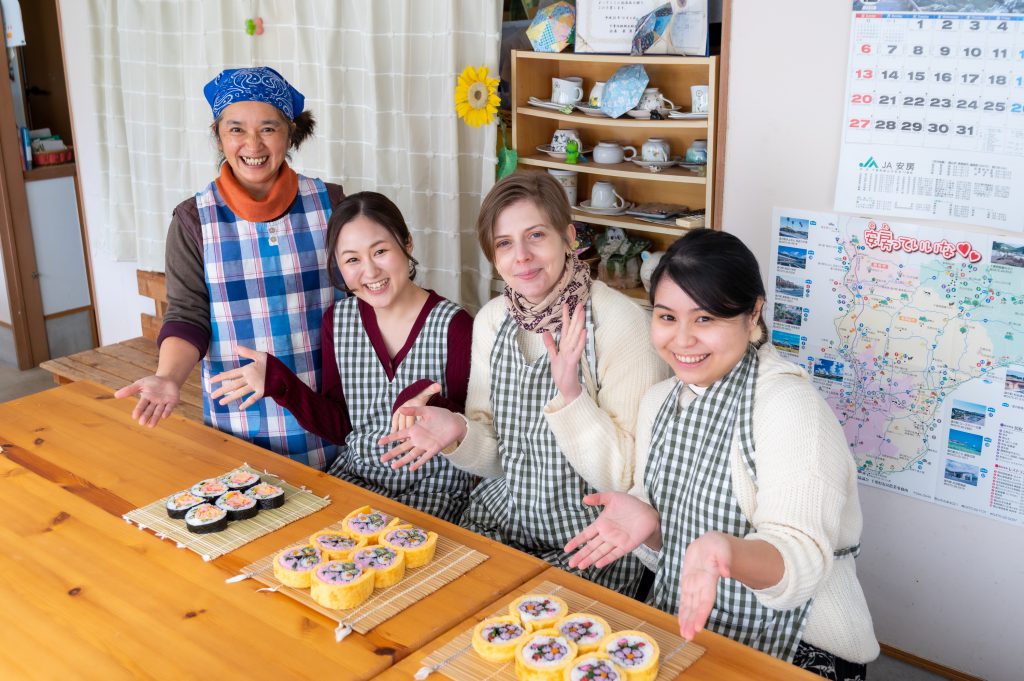
For more information regarding Chiba food and products, I recommend reading the CHOMP CHIBA pamphlet.

